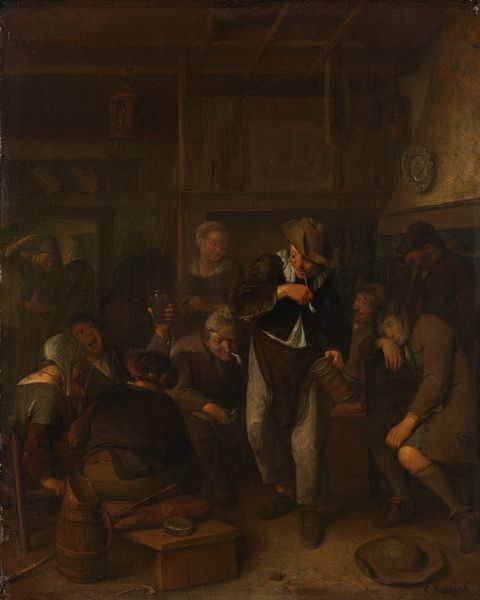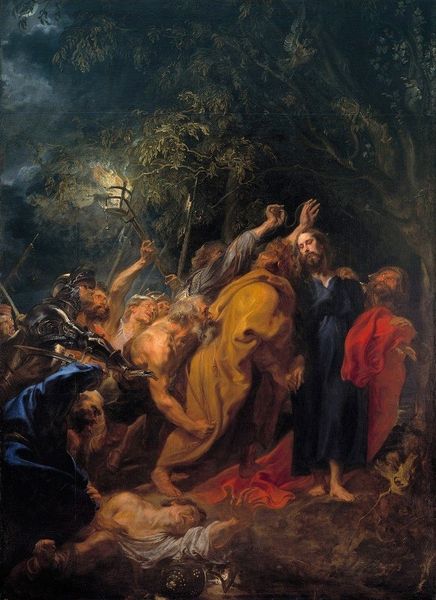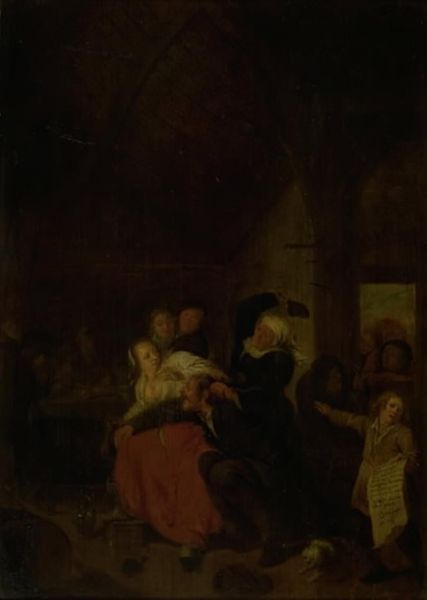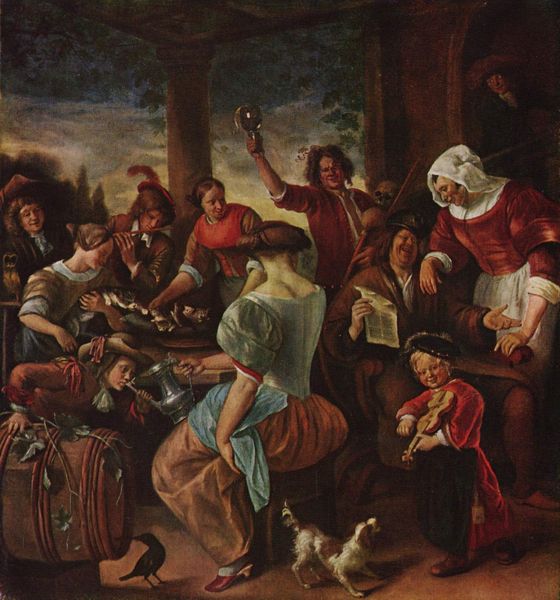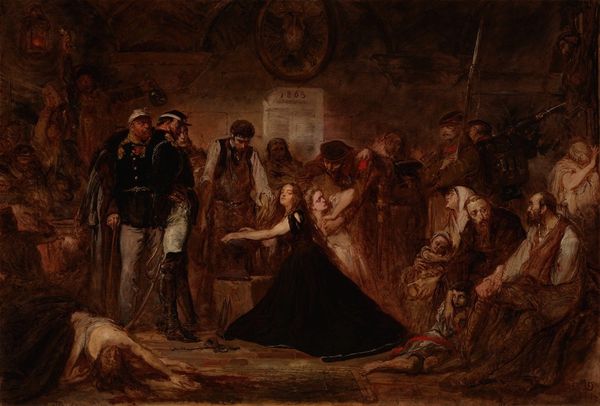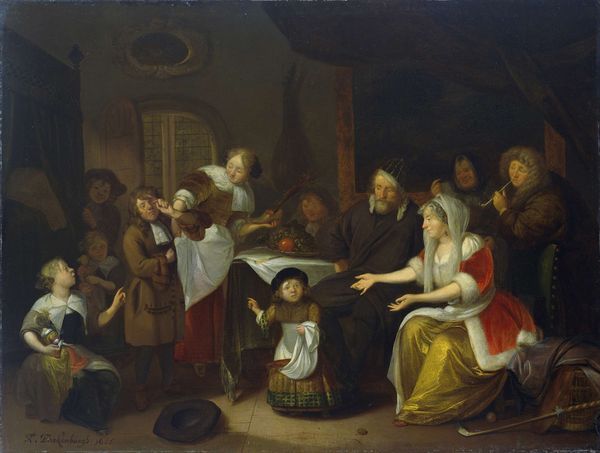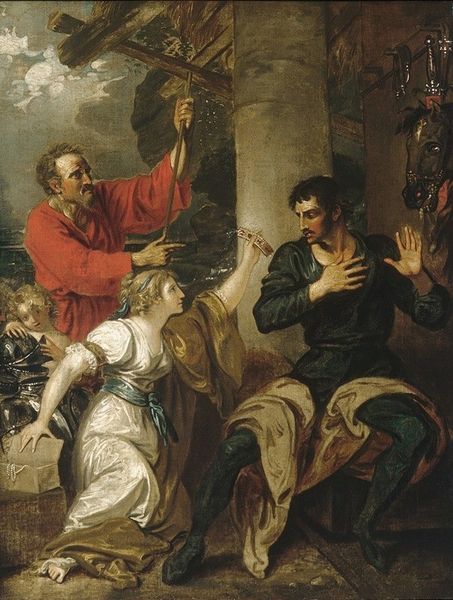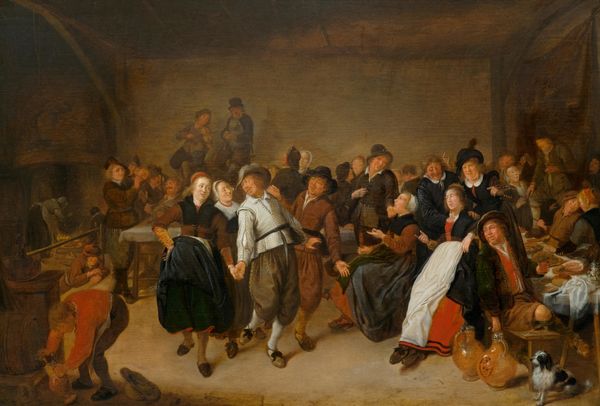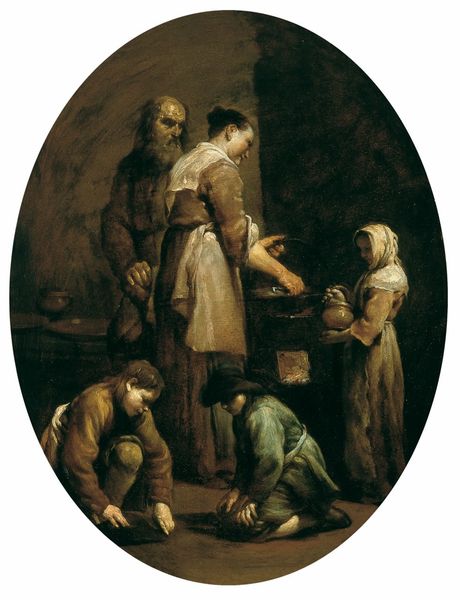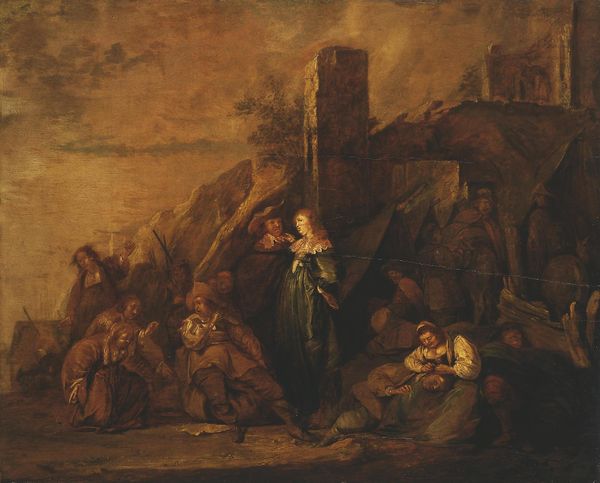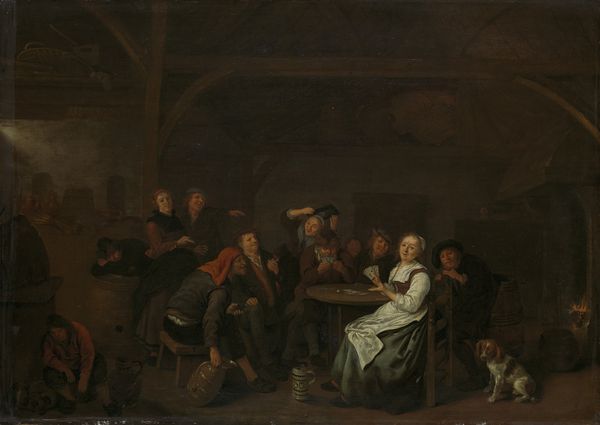
Dimensions: support: 406 x 295 mm frame: 558 x 449 x 77 mm
Copyright: CC-BY-NC-ND 4.0 DEED, Photo: Tate
Curator: John Vanderbank’s "Don Quixote Addressing the Goatherds" presents a captivating scene. I’m immediately struck by the texture – that thatched roof, the roughspun clothing, and the almost theatrical lighting. Editor: It feels like a pivotal moment, doesn't it? All eyes are on Don Quixote; it speaks volumes about the societal role of storytelling and the romanticized vision of a bygone era. The goatherds' varied expressions hint at complex social dynamics. Curator: Absolutely. The artist's handling of paint, the visible brushstrokes, even the apparent lack of precise detail in certain areas, it all points to a particular mode of production and consumption within the art market of that time. Editor: And look at Don Quixote himself, elevated both literally and figuratively. Vanderbank seems to be exploring the very concept of heroism. How did the artist’s social standing affect his interpretation? Curator: A fascinating question! Analyzing Vanderbank’s career and patronage networks would tell us more about the painting's purpose and how the materials themselves contribute to its message. Editor: Right. Considering his identity and the cultural context, we can decode how narratives about class, power, and idealism are constructed and reinforced, even inadvertently. Curator: It's incredible how a study of paint and process can reveal deeper societal structures. Editor: Indeed, the artwork serves as a portal to understand the intersection of art, culture, and identity.
Comments
tate 8 months ago
⋮
http://www.tate.org.uk/art/artworks/vanderbank-don-quixote-addressing-the-goatherds-t00937
Join the conversation
Join millions of artists and users on Artera today and experience the ultimate creative platform.
tate 8 months ago
⋮
The panel is one of nearly forty similar scenes from 'Don Quixote' which Vanderbank painted during the 1730s. They are related to but not direct replicas of the more than sixty illustrations, begun in 1723, which the artist drew for an edition of Cervantes's novel published by Tonson in 1738. It is not clear why Vanderbank painted this set over so long a period, but contemporary observers like George Vertue noted that he led a dissipated life and was constantly in debt. Vertue noted, however, that he was fortunate enough to have a landlord willing to have his rent paid in anything the artist cared to paint, in particular 'Storys of Don Quixot'. Gallery label, September 2004
